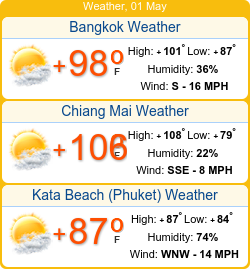
What's Happening at Wat Tampa
Search
Wat Tampa Visitors
Home
Article Index
The following is from "An Overview of Cultural History in Thailand" by Chamnong Tongpraset
Before Buddhism spread to the land now called "Thailand", the people in this area adhered to animism and later Brahmanism, particularly Saivaism which in those days spread all over what is now Cambodia,
According to the history, in {tooltip}273 B.E. / 270 B.C.{end-link}B.E (or B.C.E refers to Before the Common Era; B.C. stands for Before Christ; for reference Buddha was born about 583 B.C.E.{end-tooltip}, there came to the throne of India one of the greatest men in history, King Asoka, the first Emperor who ruled India for more than 40 years.In the early years of his reign, he invaded and conquered Kalinga, a country of brave people in southern India. The horrors of this conquest made him so remorseful over the suffering of the people that he gave up war completely. And it was at this time that King Asoka became converted to Buddhism. From this moment he adopted the policy of {tooltip}Dharmavijaya{end-link}Conquest by righteousness or conquest of men's hearts by the law of Duty or Piety{end-tooltip} in place of {tooltip}Sangamavijaya{end-link}Conquest by war{end-tooltip}, and spent the rest of his life promoting Dharma or the law of Piety through out his great empire. He was changed from Candasoka, or Asoka the Fierce, to Dharmasoka, or Asoka the Righteous, whose example all later great kings tried to follow {tooltip}1{end-link} Phra Rajavaramuni (Prayudh Payutto), Thai Buddhism in the Buddhist World, Bangkok: Mahachulalongkorn Alumni Association, B.E. 2527 / 1984 C.E. pp. 28-9{end-tooltip}.
In accordance with this policy of piety, King Asoka had his edicts inscribed on rocks and pillars which were scattered everywhere throughout his empire to carry the message to his people.In the 18th year of his reign, the Third Buddhist Council was held under his patronage at {tooltip}Pataliputra (modern Patna){end-link}The modern city of Patna is situated on the southern bank of the Ganges in the state of Bihar in eastern India. The city also straddles the rivers Kosi, Sone and Gandak and Punpun.{end-tooltip}, his capital, with the object of purging the {tooltip}Sangha{end-link}(lit. "group, assembly") is usually used in one of two ways: it refers either to the community of ordained monks or to the community of "noble ones" — persons who have attained at least stream-entry, the first stage of Awakening.{end-tooltip} of heretics and preserving the pure teachings of the Buddha.
After the Council, nine missions of elders were sent to preach the Dharma in various states and foreign countries. Of these, the mission headed by the elder Mahinda, his son, carried the Message of Buddhism to Ceylon, and the other mission headed by elders Sona and Uttara were sent to Suvarnabhumiwhich some scholars identified with Nakhom Pathom province in Central Thailand {tooltip}2{end-link}Phra Rajavaramuni. Op. Cit., p29{end-tooltip}
Looking back on Thai history, it may be seen clearly the close relationship between Buddhism and the Thai nation.
